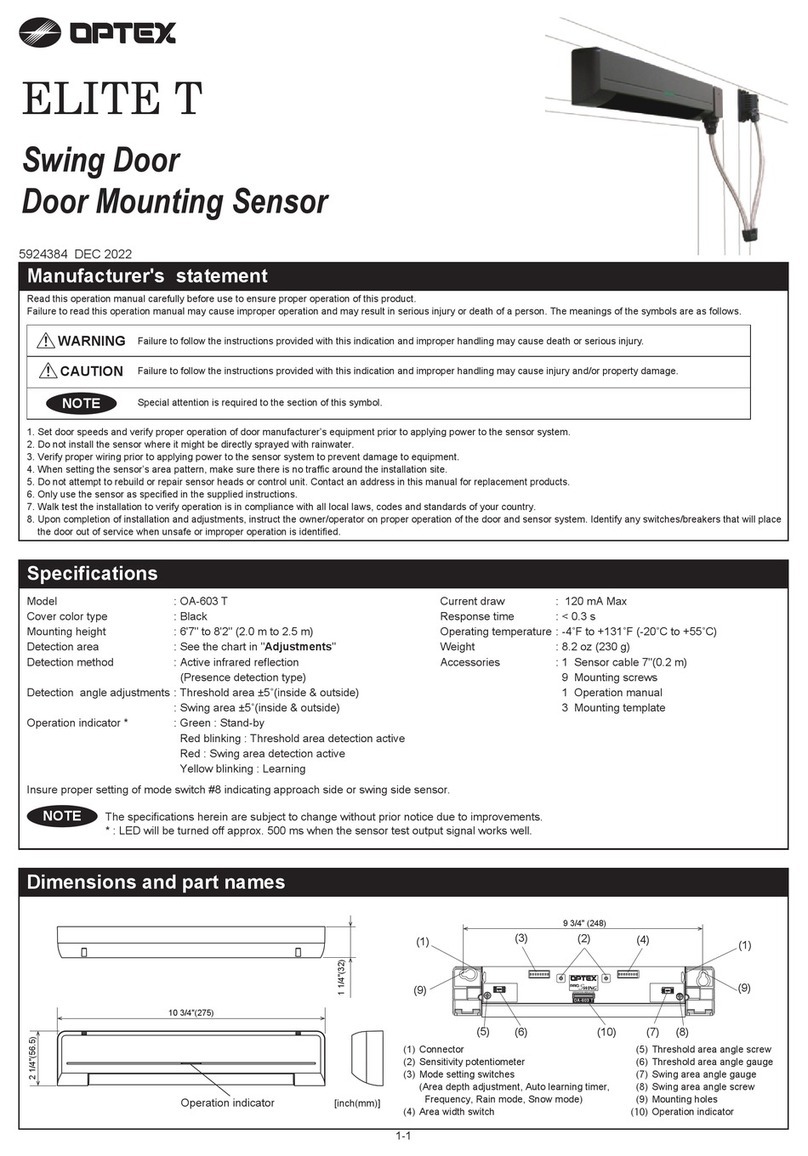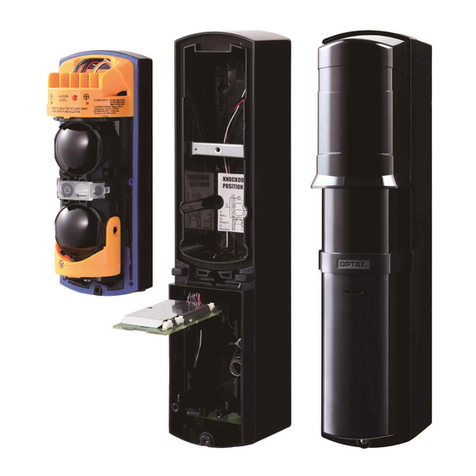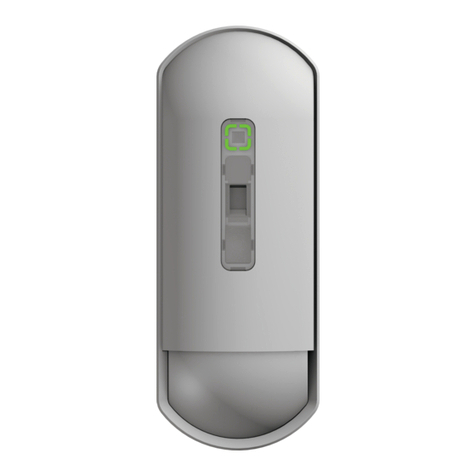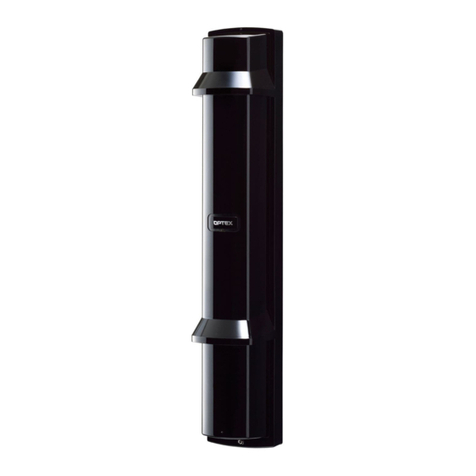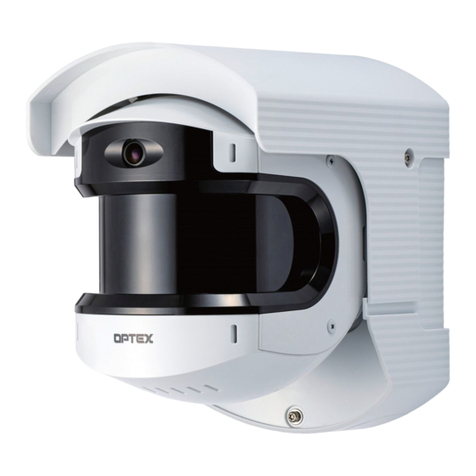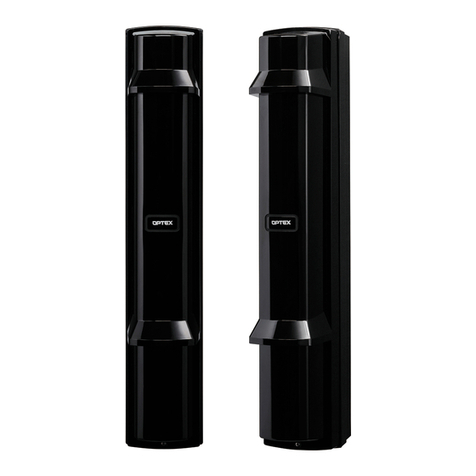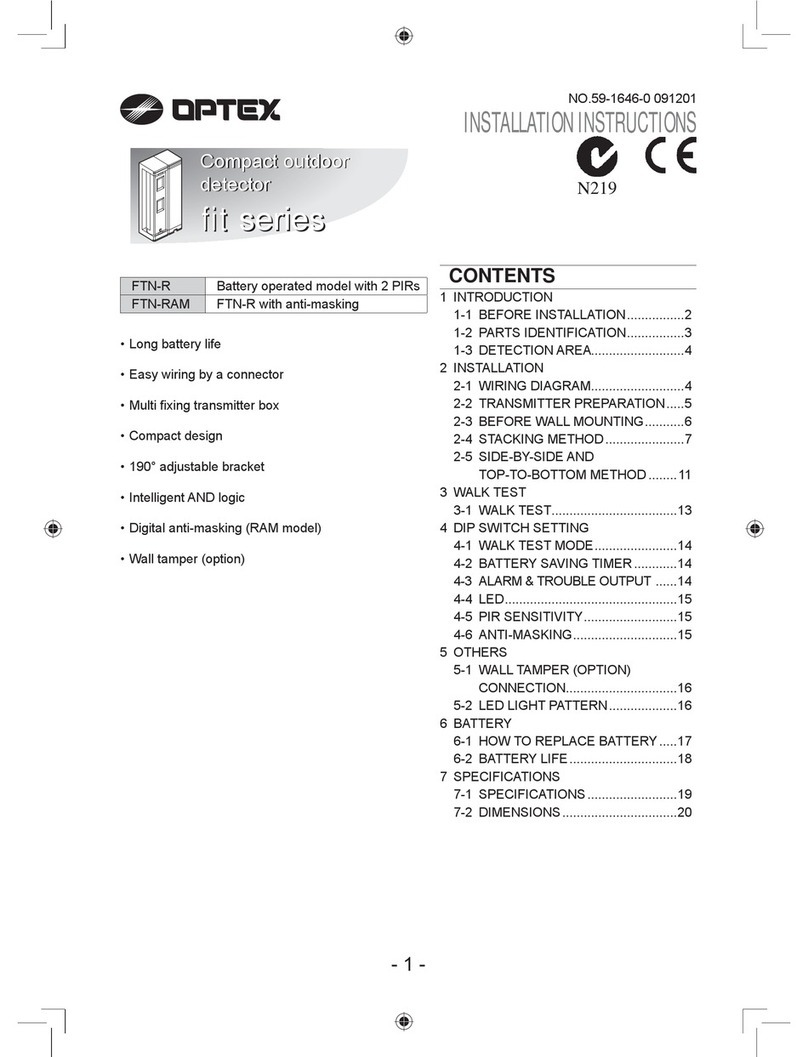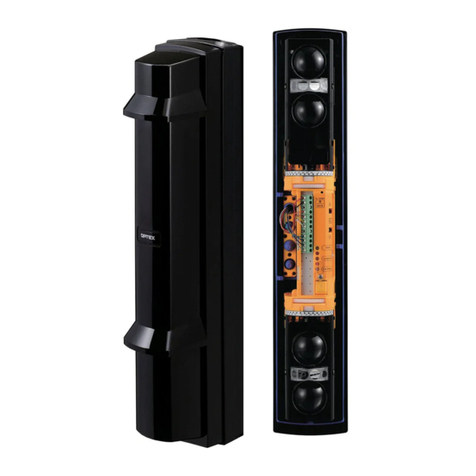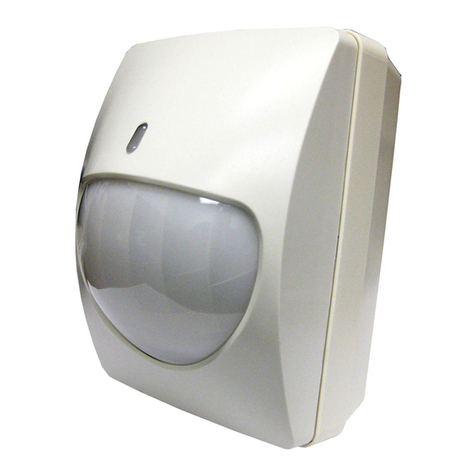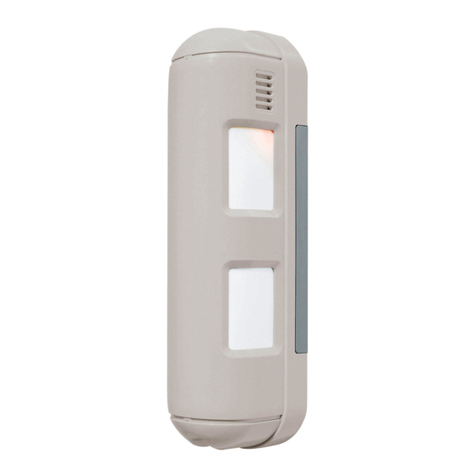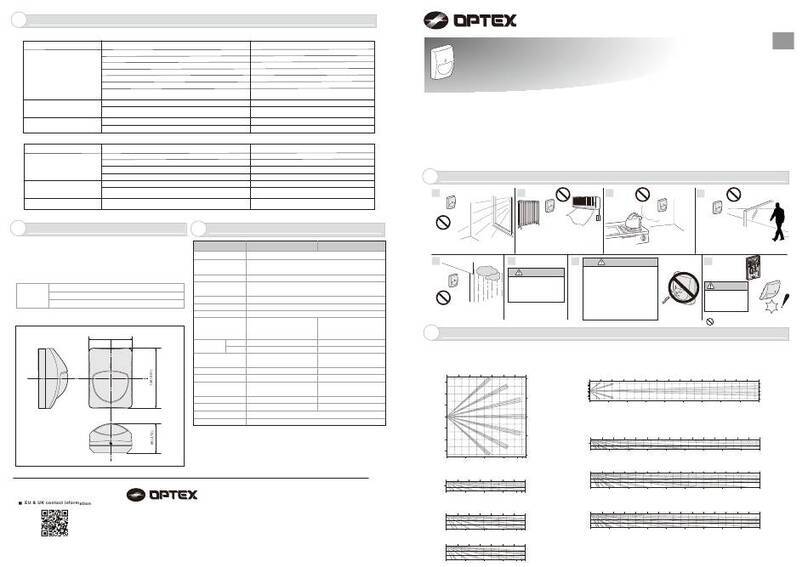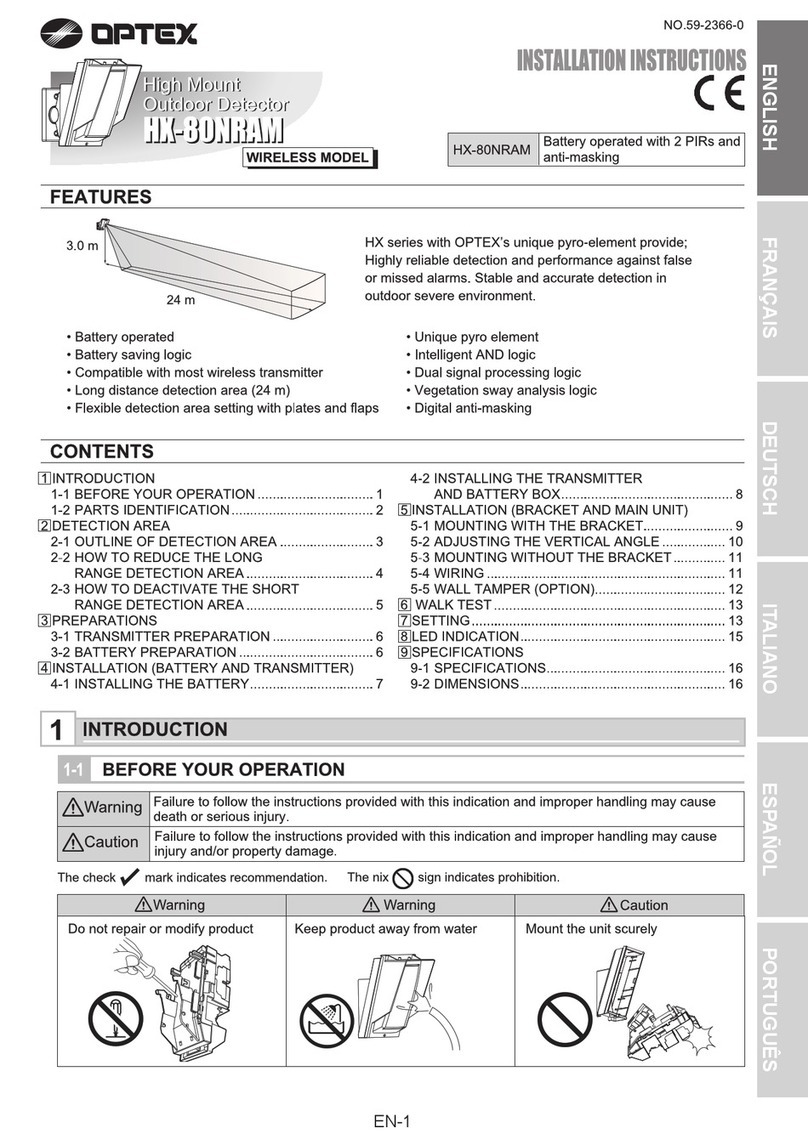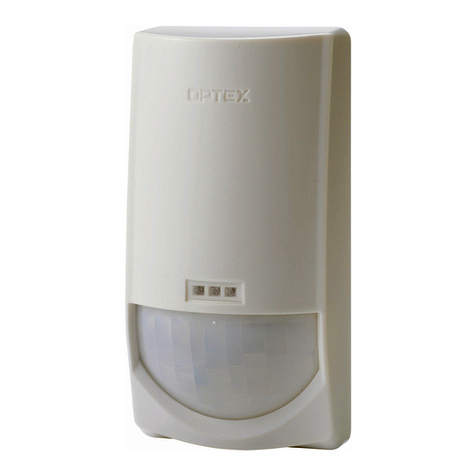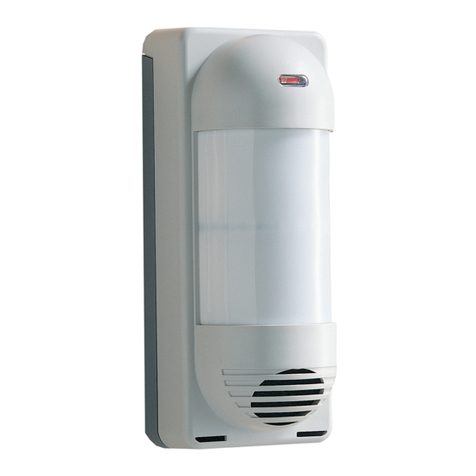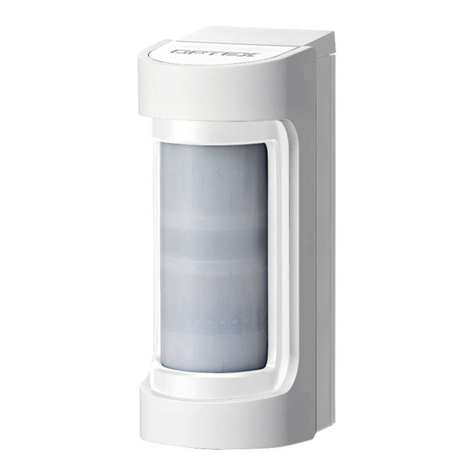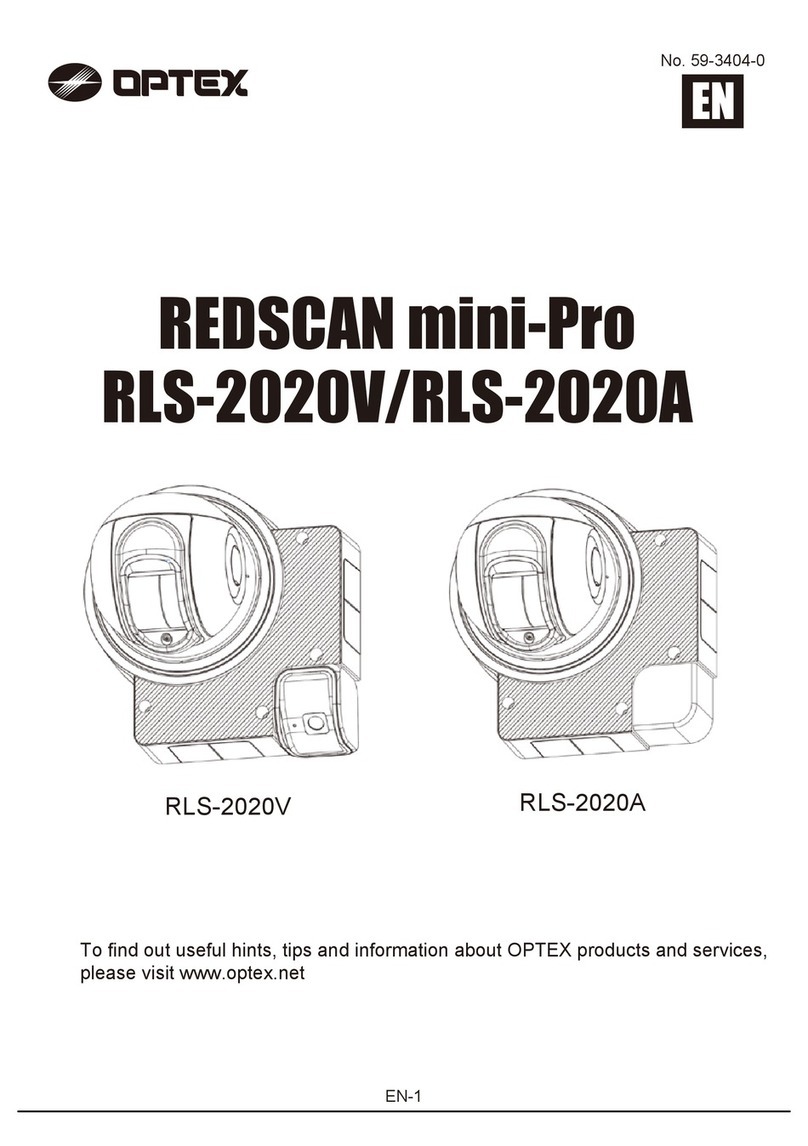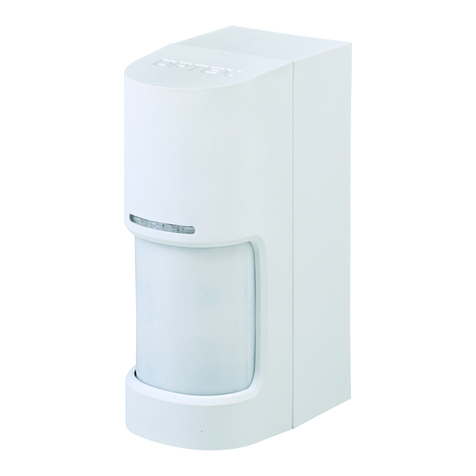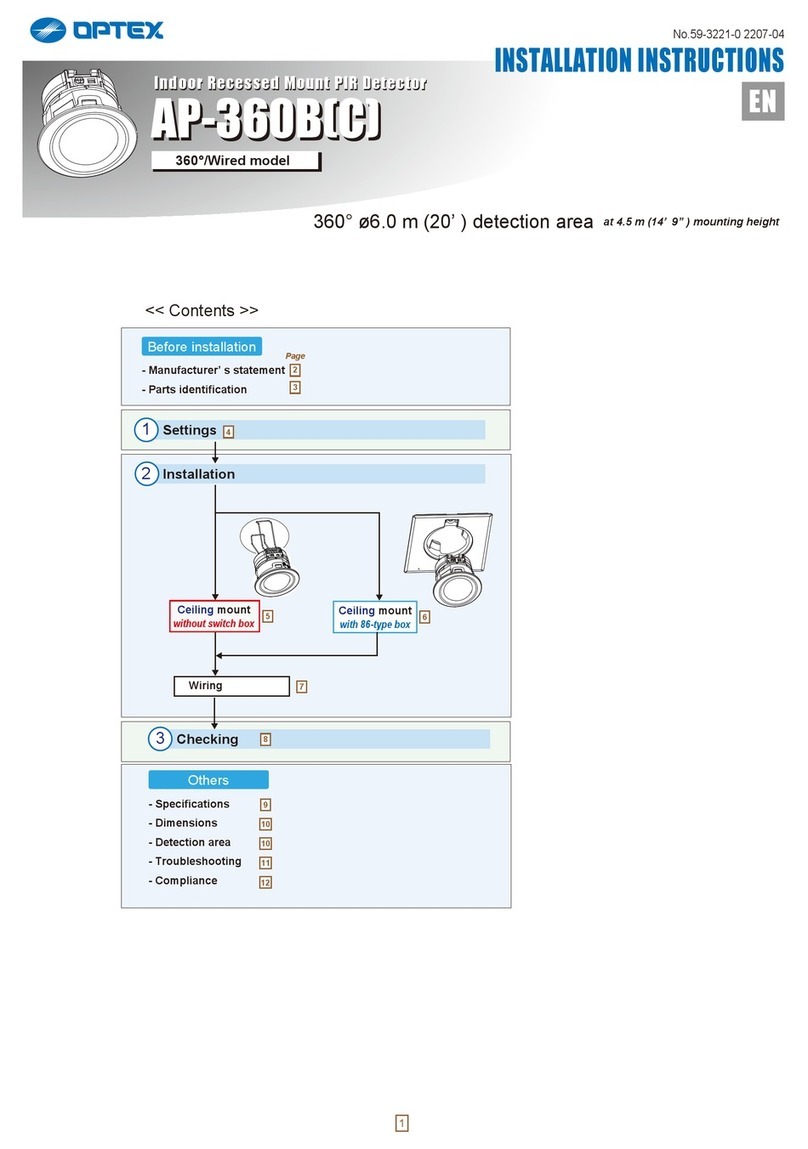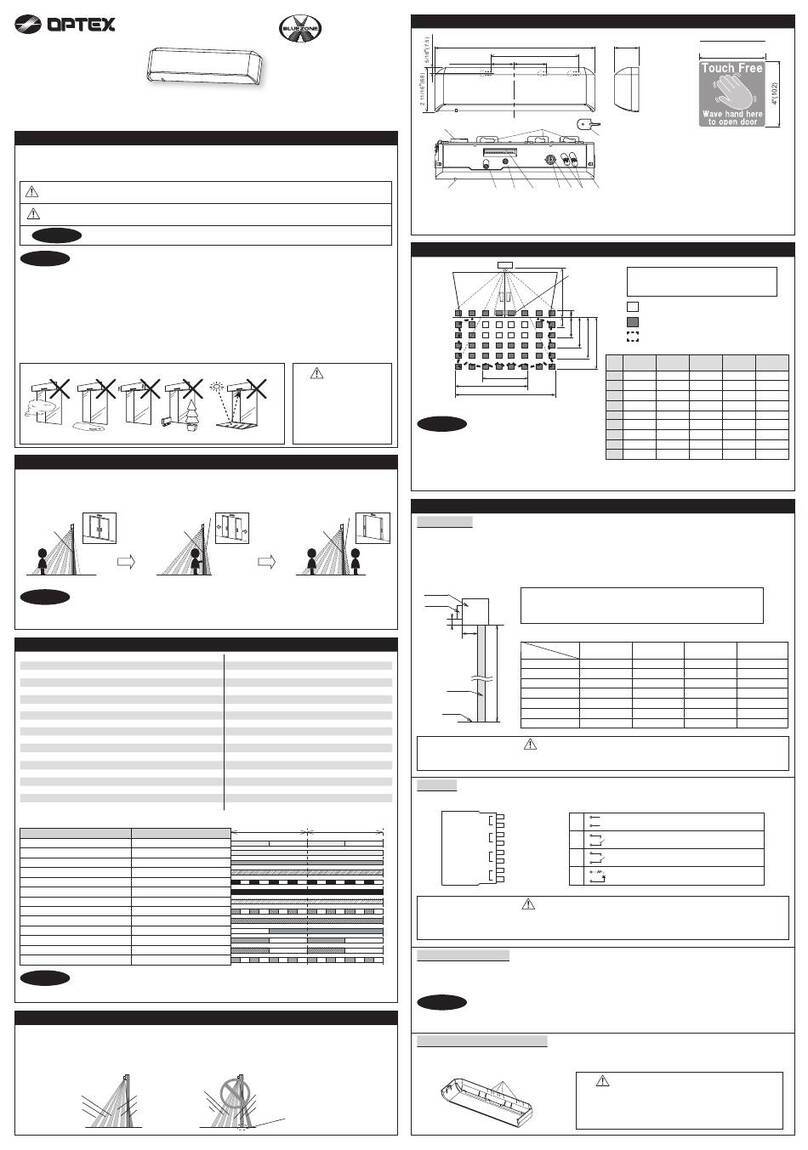
INTRODUCTION
1-1 BEFORE YOUR OPERATION 1
1-2 PRECAUTIONS 2
1-3 PARTS IDENTIFICATION 2
PREPARATIONS
2-1 ORDERING DETECTOR BATTERIES 2
2-2
CHECKING THE WIRELESS TRANSMITTER SIZE
2
INSTALLATION
3-1 SEPARATING 3
3-2 WALL MOUNTING 3
3-3 POLE MOUNTING 5
3-4 MOUNTING IN THE BEAM TOWER 6
3-5
MOUNTING EXAMPLE AT PARTICULAR CASE
6
3-6 WIRING 7
SETTING
4-1 FUNCTION 8
4-2 OPTICAL ALIGNMENT 9
4-3 OPTIONAL SETTINGS 10
OPERATION CHECK
5-1 LED INDICATION 10
5-2 OPERATION CHECK 10
TROUBLESHOOTING
6-1 TROUBLESHOOTING 11
DIMENSIONS
7-1 DIMENSIONS 11
SPECIFICATIONS
8-1 SPECIFICATIONS 11
OPTIONS
9-1 OPTIONS 12
Warning
Caution
Warning
Caution
1
2
3
4
5
6
7
8
9
INSTALLATION INSTRUCTIONS
No. 59-2157-1
CONTENTS
FEATURES
Failure to follow the instructions provided with
this indication and improper handling may cause
death or serious injury.
Failure to follow the instructions provided with
this indication and improper handling may cause
injury and/or property damage.
•Read this instruction manual carefully prior to installation.
•After reading, store this manual carefully in an easily accessible
place for reference.
•This manual uses the following warning indications for correct use
of the product, harm to you or other people and damage to your
assets, which are described below. Be sure to understand the
description before reading the rest of this manual.
This symbol indicates prohibition. The specific prohibited
action is provided in and/or around the figure.
This symbol requires an action or gives an instruction.
INTRODUCTION
1
1-1 BEFORE YOUR OPERATION
Detection range 100m/350ft.
SL-350 QFR
SL-350 QNR
Detection range 100m/350ft.
4 selectable beam frequencies
•
Battery-operated detector
- Battery life:
Transmitter Approx. 4 years (2 in the transmitter)
Receiver Approx. 5 years (2 in the receiver)
(when using LSH20 (3.6V, 13Ah) batteries manufactures by SAFT)
- Up to 8 batteries (4 in the transmitter, 4 in the receiver)
(normal operation requires 2 batteries)
- Battery saving function
- Intermittent output function
- Spacious back box for numerous wireless transmitters
•Quad high power beams
•Smart design
- Slim body design
- Easy-to-see vivid interior color for optical alignment
-
IP65
waterproof
structure
•
4 channel beam frequency selector (SL-350QFR only)
• Viewfinder with 2X magnification
•
Beam interruption adjustment function
•
D.Q. circuit (environmental disqualification)
•
Tamper function
•
LED indicator for an easy alignment
•Various options (refer to page 12)
( ABC-4, BC-4, BCU-4, PSC-4, SBU-4, BAU-4, EC-4 ) Do not use the product for purposes other than the detection
of moving objects such as people and vehicles.
Do not use the product to activate a shutter, etc., which may
cause an accident.
Do not touch the unit base or power terminals of the
product with wet hands (do not touch when the product
is wet with rain, etc.). It may cause electric shock.
Never attempt to disassemble or repair the product. It may
cause fire or damage to the devices.
Do not use batteries that have different levels of power
remaining (i.e., new and used batteries).
Not observing the above may result in an explosion, leakage
of electrolyte, emission of toxic gases or other outcomes that
may be harmful to people and property.
[Handling of Batteries]
Do not recharge, short circuit, crush, disassemble, exceed
heat above 100°C (212°F), incinerate, or expose contents to
water. Do not solder directly to the cell.
Not observing the above may result in fire, explosion or
severe burn hazard.
Do not solder directly to the cell.
Do not pour water over the product with a bucket, hose, etc.
The water may enter, which may cause damage to the
devices.
Clean and check the product periodically for safe use. If any
problem is found, do not attempt to use the product as it is
and have the product repaired by a professional engineer or
electrician.
BATTERY OPERATED
PHOTOELECTRIC DETECTOR
Smart Line series
BATTERY OPERATED
PHOTOELECTRIC DETECTOR
Smart Line series
™
™
ENGLISH FRANÇAIS DEUTSCH ITALIANO ESPAÑOL PORTUGUÊS
EN-1
